Country Singapore Founded 12 March 1957 | ||
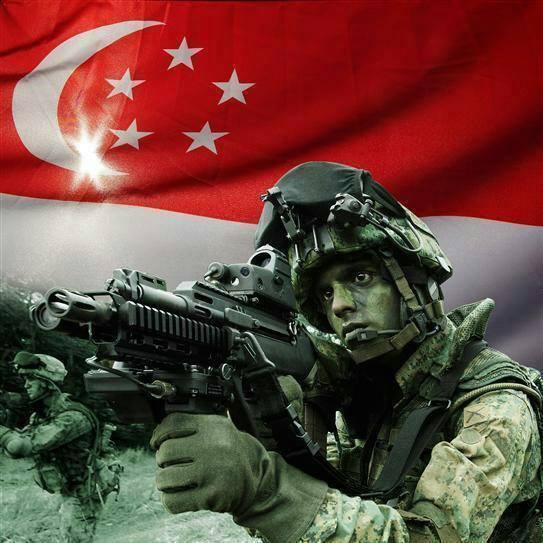 | ||
Size 72,000 (active, including 35,000 conscripts)350,000+ (reserve) Notable commanders Neo Kian Hong, Ravinder Singh, Perry Lim Similar Singapore Armed Forces, Republic of Singapore Air Force, Republic of Singapore Navy, Singapore Guards, Malaysian Army Profiles | ||
The Singapore Army is the service of the Singapore Armed Forces (SAF) tasked with land operations. It is the largest of the three Services. The Singaporean army is primarily a conscript army that, in the event of war, mobilises most of its combat power by calling up military reservists.
Contents
- History
- Strategic doctrine
- Organisation
- Combat Arms
- Combined Arms Divisions
- MINDEF Reserve MR NS Divisions
- Non Divisional Units some appended to the General Staff
- References
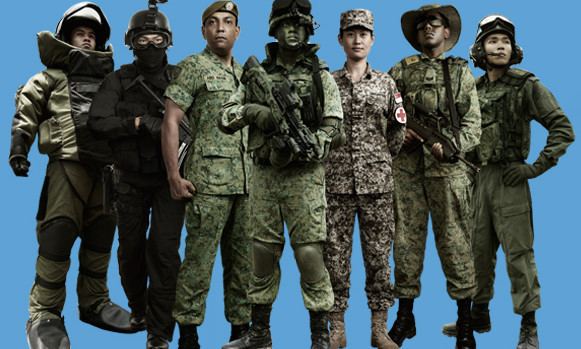
History
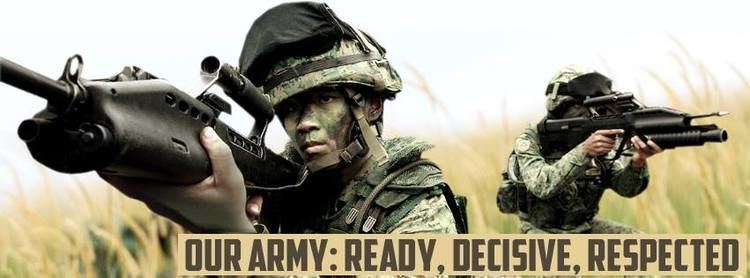
Two infantry regiments formed the nucleus of the Singapore Army. These were established pre-independence, in anticipation of self-rule following British decolonisation. The First Singapore Infantry Regiment (1 SIR) was constituted in 1957, under British auspices. The Second Singapore Infantry Regiment (2 SIR) followed in 1963. After a fraught merger with the Federation of Malaya and subsequent separation in 1965, newly-independent Singapore formally established its army by passing the Singapore Army Bill in December 1965.
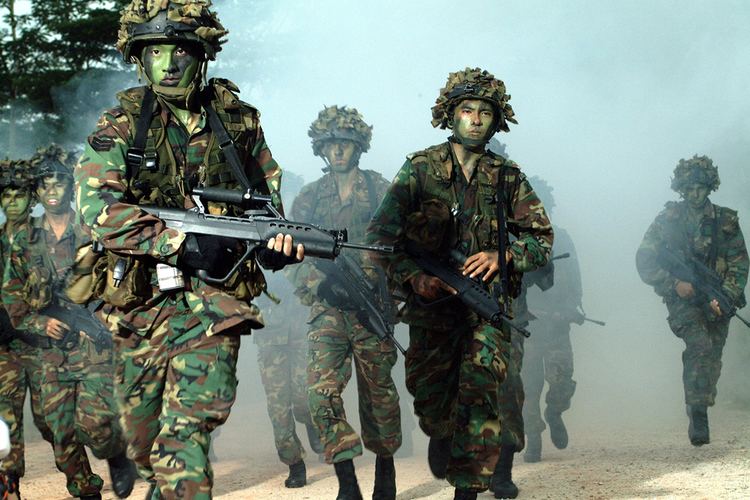
In 1972, Parliament passed further legislation (the Singapore Armed Forces Act) to reorganise and consolidate the armed forces' disparate commands and administrative functions.
Military Deployments
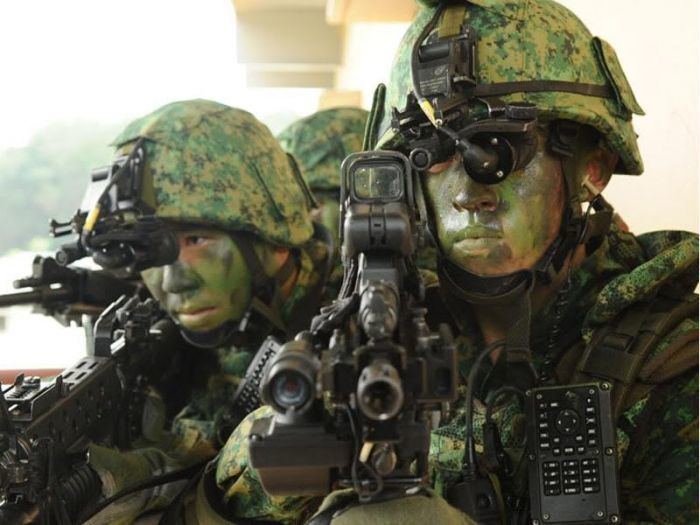
Strategic doctrine
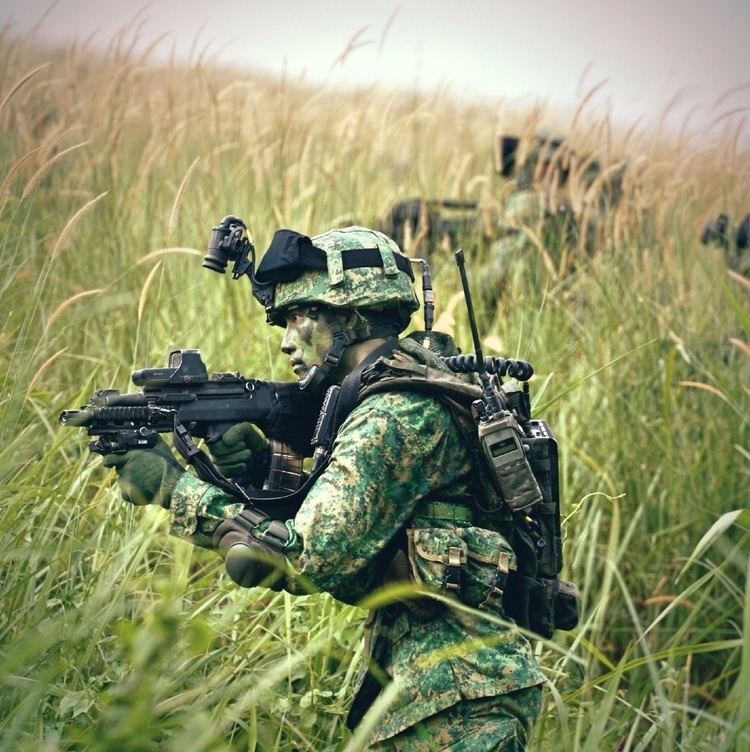
The stated mission of the Singapore Armed Forces is to deter armed aggression, and to secure a swift and decisive victory should deterrence fail. The Army is also tasked with conducting peace-time operations to further Singapore's national interests and foreign policy. These range from disaster relief to peacekeeping, hostage-rescue and other contingencies.
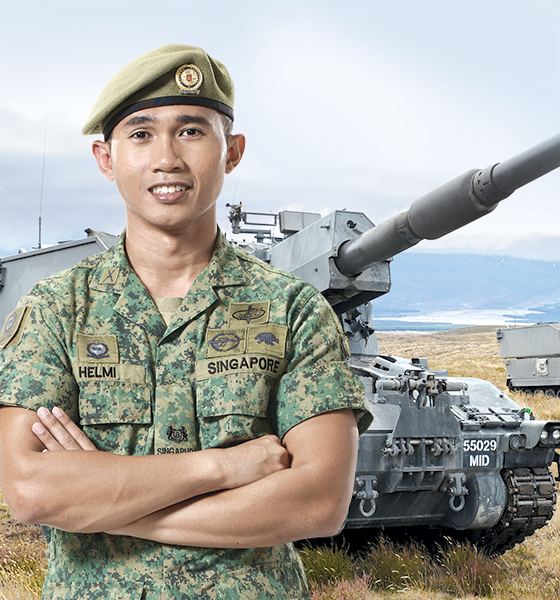
The Army views technology as a force-multiplier and a means to sustain combat power given Singapore's population constraints. Jointness across three branches of the SAF is integral to the Army's warfighting doctrine. Joint operations undertaken with the Navy and Air Force include amphibious landings and critical disaster relief operations in the aftermath of the 2004 Indian Ocean earthquake.
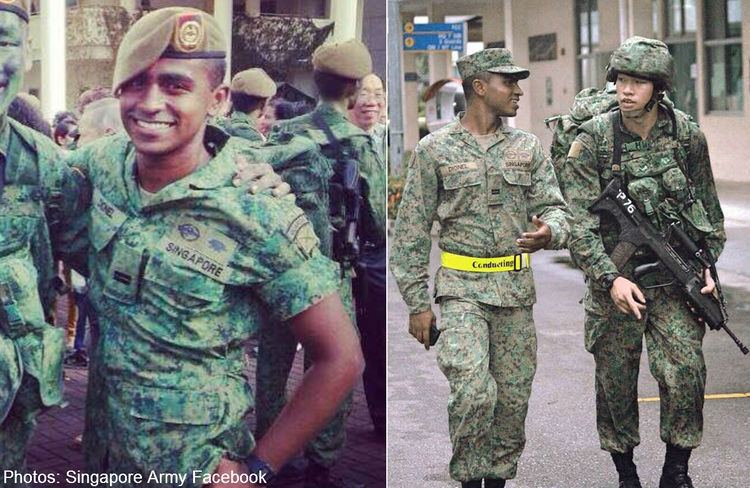
The Army has a technically proficient, relatively well-educated draftee pool and officer corps (non-commissioned and commissioned) reflective of the population at large, and has sought to leverage this to ease its transition into a more sophisticated, networked fighting force.
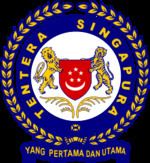
Combat readiness is a linchpin of Army policy, and military exercises up to divisional level are conducted many times yearly, simulating full-spectrum operations, up to and including full-scale war. Divisional war games are a combined arms, tri-service affair involving the Republic of Singapore Navy and Air Force. Because training space is limited in Singapore—artillery fire would quickly traverse the island—some military exercises are conducted overseas. Reservists periodically train abroad, their units regularly evaluated for combat readiness. The Army also trains bilaterally with some host nations, and military exchanges are frequent. Training is billed as "tough, realistic and safe," with a premium on safety, given the sensitivity of military deaths in a largely conscript army.
Following the Revolution in Military Affairs, and in tandem with modernizing its weapons systems, the Army is forging a transition to a more network-centric fighting doctrine that better integrates the Air Force and Navy.
Organisation
The Army is headed by the Chief of Army (COA). Assisting him are the Chief of Staff, Army General Staff and Commander, TRADOC (Army Training and Doctrine Command). There are six branches of the General Staff (G1-G6), a National Service Affairs Department (NSAD) dealing with National Service issues, and an Inspectorate. The six branches handle manpower (G1), intelligence (G2), operations (G3), logistics (G4), planning (G5) and training (G6) respectively. Each department is headed by an Assistant Chief of the General Staff (ACGS). Also advising the Chief of Army are the Senior Specialist Staff Officers (SSSOs) of the various formations (Infantry, Guards, Armour, Commandos, Artillery, Engineers and Signals).
Combat Arms
The Army consists of seven Combat Arms, from which are derived Divisional and Non-divisional units:
These are bolstered by Combat Service Support Units comprising the following:
Combined-Arms Divisions
The Army's main organizational components are its Combined-Arms Divisions, of which there are three: the 3rd, 6th and 9th Divisions. They include both active and reserve units that are operationally ready, all subject to mobilization orders in the event of war.
3rd Singapore Division (motto: "Foremost and Utmost") consists of the following subordinate units:
Under the Division-National Cadet Corps (NCC) affiliation scheme, NCC West District is affiliated to the 3rd Division.
6th Singapore Division (motto "Swift and Deadly") consists of the following subordinate units:
Under the Division-NCC affiliation, NCC Central District is affiliated to the 6th Division.
9th Division/Infantry (motto: "Forging Ahead) consists of the following subordinate units:
Organisation:
Under the Division-NCC affiliation, NCC East District is affiliated to the 9th Division/Infantry.
MINDEF Reserve (MR) NS Divisions
2 People's Defence Force
2 People's Defence Force (PDF) is responsible for homeland security, including that of key civilian installations and infrastructure. 2 PDF is also responsible for the coordination and secondment of military resources to civilian agencies in the event of a civil emergency.
Organisation:
21st Division
Designated as Army Operational Reserve (AOR), the 21st Division is a rapid deployment force of highly mobile infantry (Singapore Guards) specializing in amphibious, heliborne, and maneuver warfare. The armoured and artillery components of the division are lightweight, amphibious, and rapidly deployable.
Organisation:
Of the three infantry brigades, one is active and staffed mainly by career servicemen. Two are held in reserve, one tasked with heliborne operations, the other tasked with amphibious landings.
25th Division
Also designated as Army Operational Reserve (AOR).
Organisation:
32nd Division
Tim Huxley speculates in Defending the Lion City that "the reorganisation of 1991 and 1995 left one armoured brigade, 4 SAB, outside the divisional structure, prompting speculation that it has been earmarked to form the core of a conceptualised new mechanised division." Huxley asserts that it was "initially codenamed as 32nd Division at the planning stage." Beyond speculation, there is no indication that the division was ever constituted.
